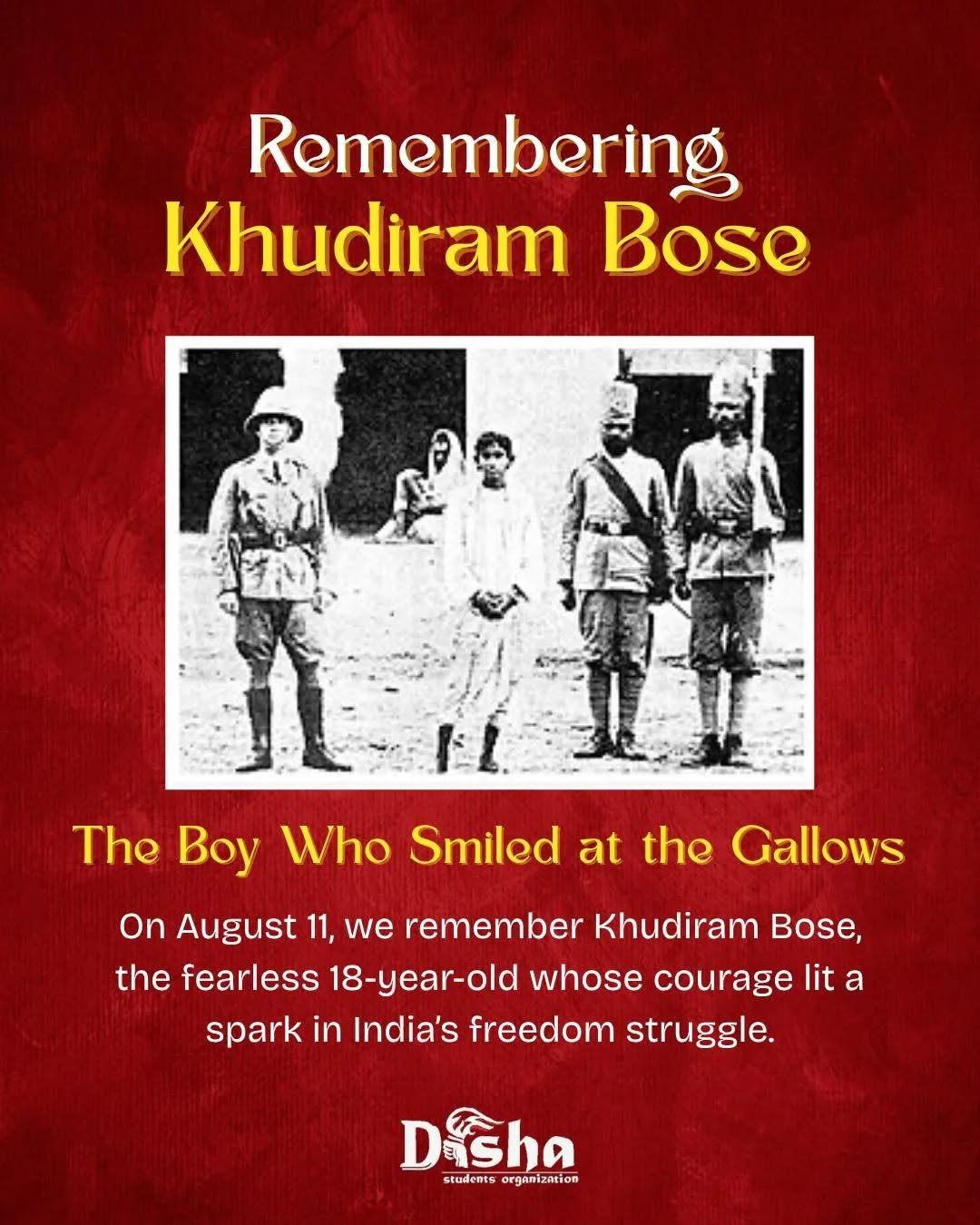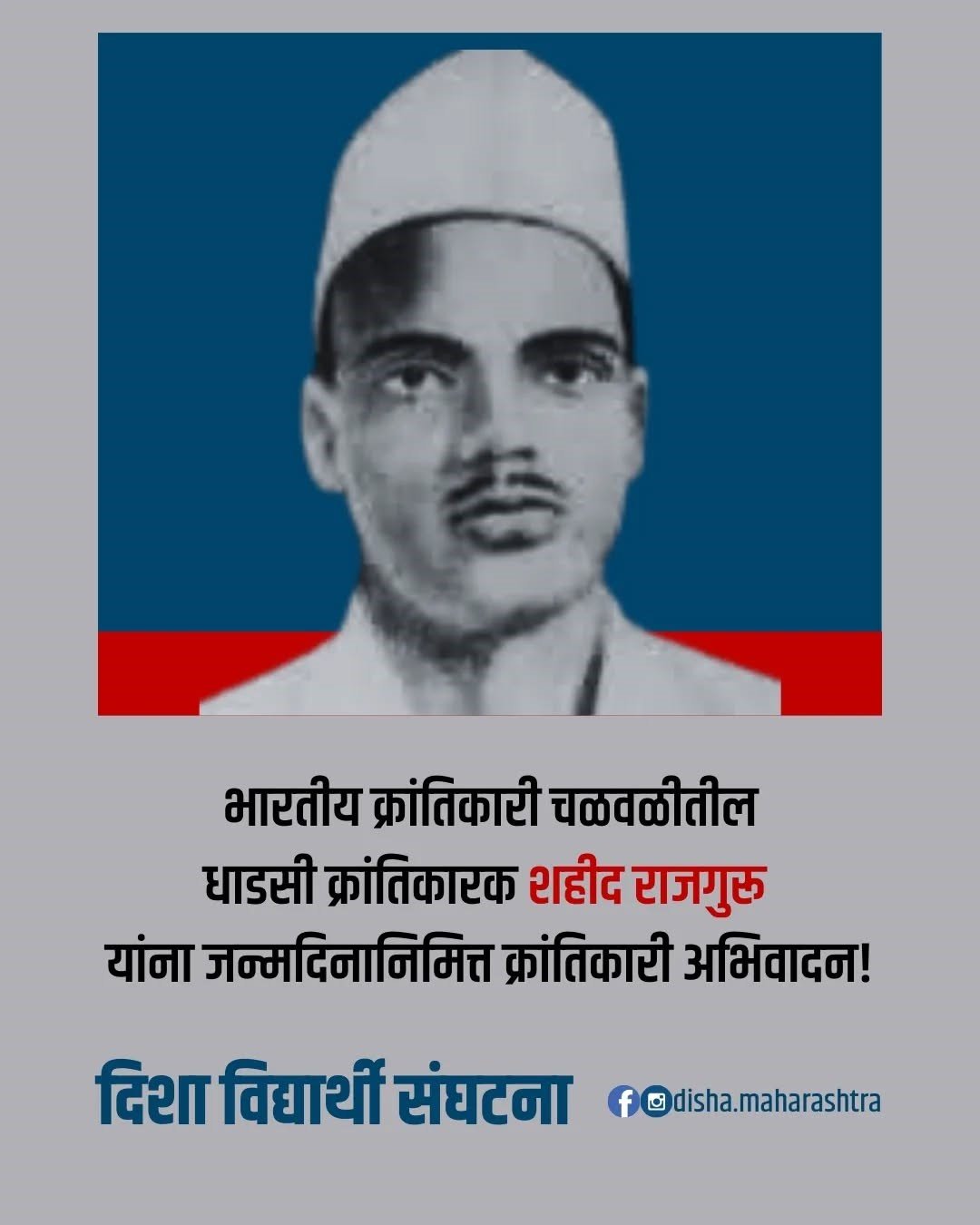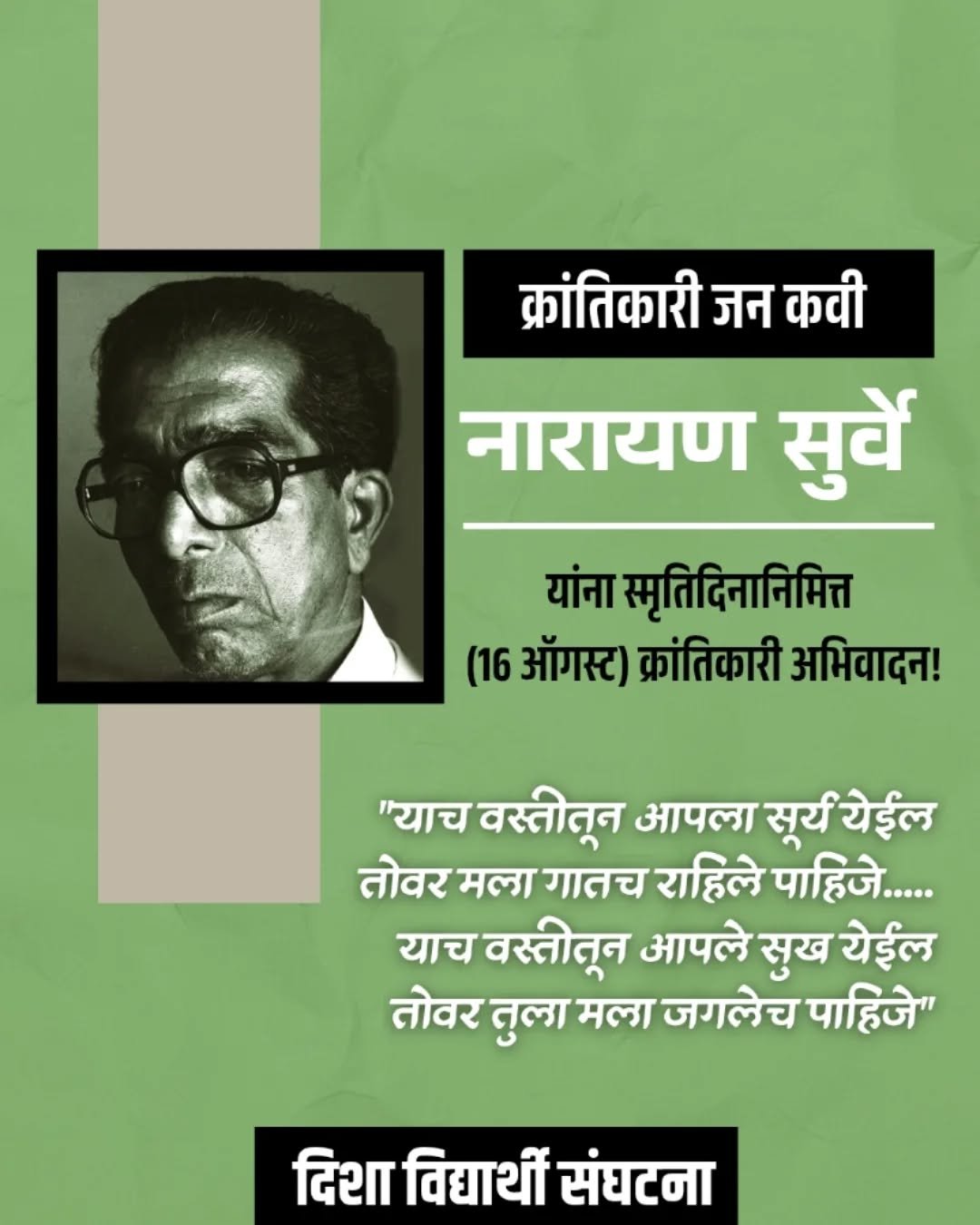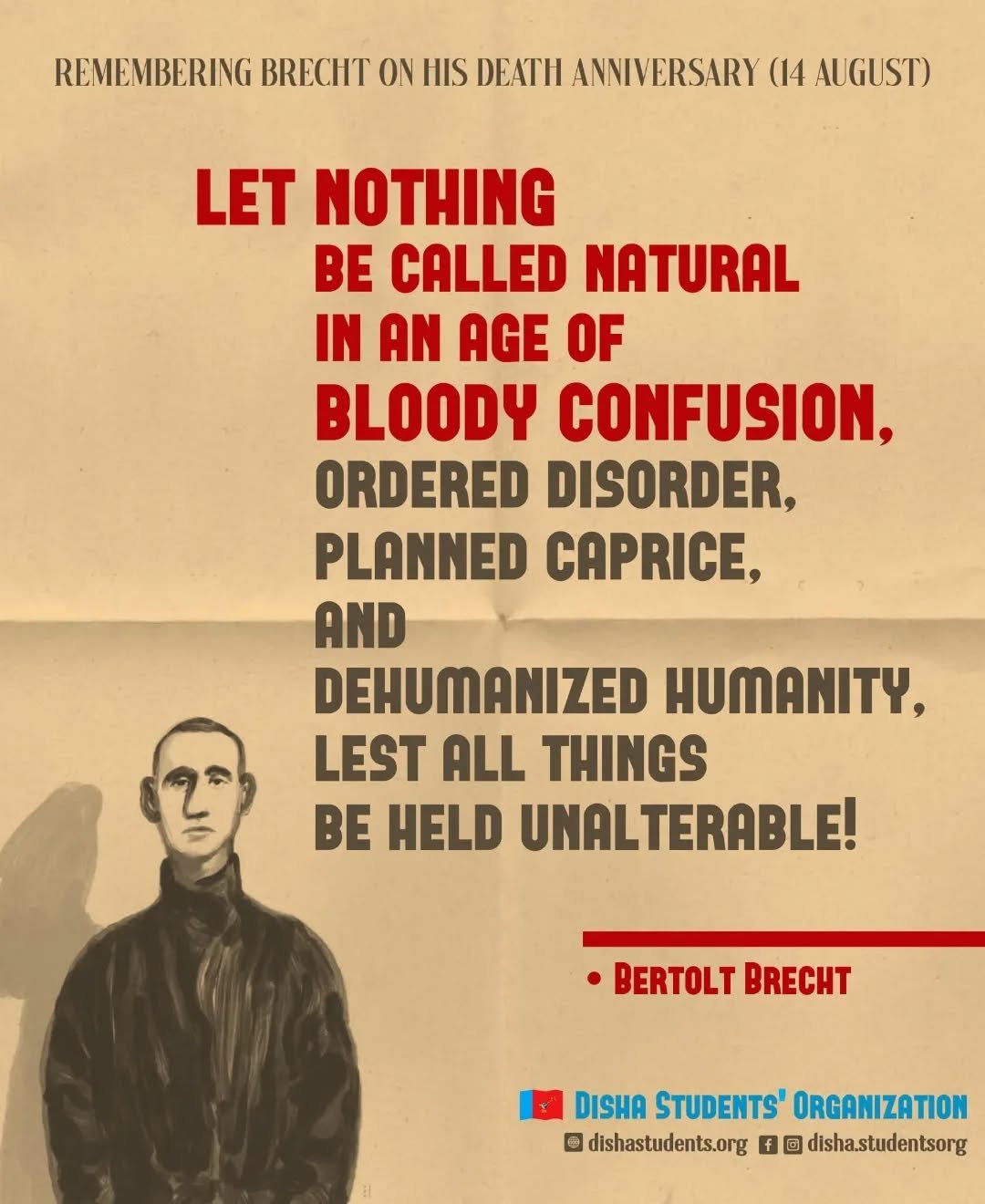Born in 1889 in a small village in Bengal, Khudiram was orphaned young and raised by his sister. Even as a boy, he showed compassion and resolve, once staying behind during a cholera outbreak to care for the sick when others fled. In 1904, Khudiram left his sister’s house without telling anyone, and later sent a letter to his sister, Anurupa Devi. Later, Anurupa Devi wrote:
“In 1904, Khudiram once left home without telling anyone. After many days, we received a letter in which Khudiram wrote — My dear sister, it is no longer possible for me to live the life of an ordinary householder, nor do I wish to continue my studies. So why should I remain a burden on you? Therefore, I have decided to renounce worldly life.” Anurupa Devi wrote: “My dear little brother set out to become a renunciate! But no, he had not gone in search of God — he had gone to understand and know the people of his country. … Later, it was found that he was working in the fields of an old, poor, infirm family in Bankura who were starving, as they had no one to work their land.”
Anurupa Devi added: “I had ‘bought’ Khudiram for three fistfuls of khuddi (broken rice) — a rural custom to protect children from death, where a relative symbolically ‘buys’ them. I wanted him to remain mine, but he had already been ‘bought’ by the people of the nation. I bought him for three fistfuls of broken rice, but the fearless sons of the country bought him with a fistful of blood.”
Thus, from a very young age, Khudiram was moved to join the fight against British rule. At fifteen he joined the Anushilan Samiti, a revolutionary group that believed freedom must be fought for. Khudiram became an active supporter of the Swadeshi movement, encouraging people to boycott British goods and embrace locally made products. He took part in pamphleteering and burning smuggled foreign goods and persuaded shopkeepers to stock Indian-made items, seeing Swadeshi as a weapon to weaken colonial power. He trained in guerrilla tactics, learned bomb-making, and prepared himself for direct action against the British authorities.
In 1908, with Prafulla Chaki, he set out to assassinate Magistrate Douglas Kingsford, notorious for his cruelty against freedom fighters. On April 30 they attacked a carriage they believed was his. Fate intervened and two civilians, the wife and daughter of a barrister, lost their lives instead. While Prafulla Chaki shot himself before he was captured, Khudiram fled for 25 miles on foot, but was captured by the police. In court he expressed regret for the innocents yet vowed he would target Kingsford again. Sentenced to death, he met his fate with a smile and even offered to teach the judge how to make bombs.
At dawn on August 11, 1908, Khudiram walked to the gallows with his head held high. His execution shattered the illusion of British invincibility. His sacrifice inspired thousands.
Students in Calcutta attended classes barefoot in mourning, poets wrote in his praise, and dhotis embroidered with “Khudiram” became symbols of defiance. Revolutionaries like Bhagat Singh and Chandrashekhar Azad drew strength from his example.
Khudiram was part of the budding revolutionary movement for freedom, which believed that the British must be quickly expelled through such acts of sacrifice and struggle, as opposed to the Congress-led tactic of pressure-compromise-pressure of negotiating for small gains from the British. In these early stages of the revolutionary movement, religious slogans and ideas were often used to mobilise people for the cause of freedom, but they were not communal or religious fundamentalist in nature.
In fact, from this time itself, we can find the embryonic form of the ideological development that revolutionary movement attained by the time of HSRA. In Calcutta, the Anushilan Samiti had a library of 4,000 books, and regular classes were conducted for the education and training of revolutionaries. These revolutionaries had prepared a large series of textbooks for training their companions. They established libraries and reading rooms to educate and train the people. Although many often had a somewhat religious inclination, these revolutionaries were of a secular mindset. Revolutionaries like Khudiram Bose, Satyendranath Basu, and Kanailal Dutt did not believe in religion at all.
As the movement matured, the revolutionaries like Bhagat Singh understood the need for a completely secular movement separated from religion, adopting slogans such as “Inquilab Zindabad” (Long live revolution), “Quami Ekta zindabad” (Long live the nation’s unity) and recognising that freedom can be brought about not by a few acts of individual bravery but through the collective power of the masses.
But the very spirit of revolution was instilled in the youth of the country by figures like Khudiram Bose, who showed with unflinching commitment that freedom cannot be negotiated, it must be fought for.
Khudiram’s life proves that youth is no barrier when the cause is just. He chose bold resistance over quiet survival, living and dying for the liberation of millions.
Today, let us not only remember him but carry his flame forward in our struggles for justice.
– Disha Students Organization




